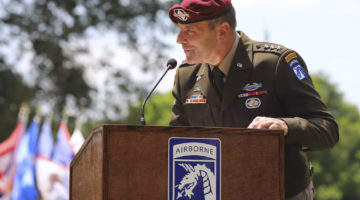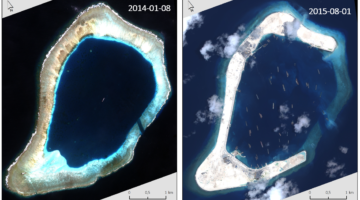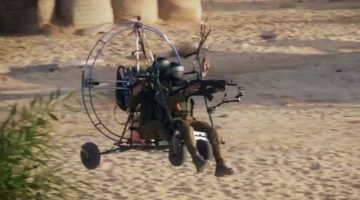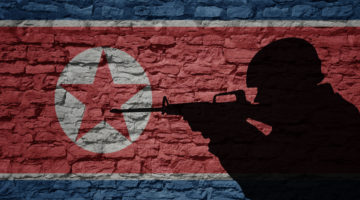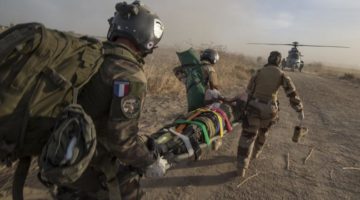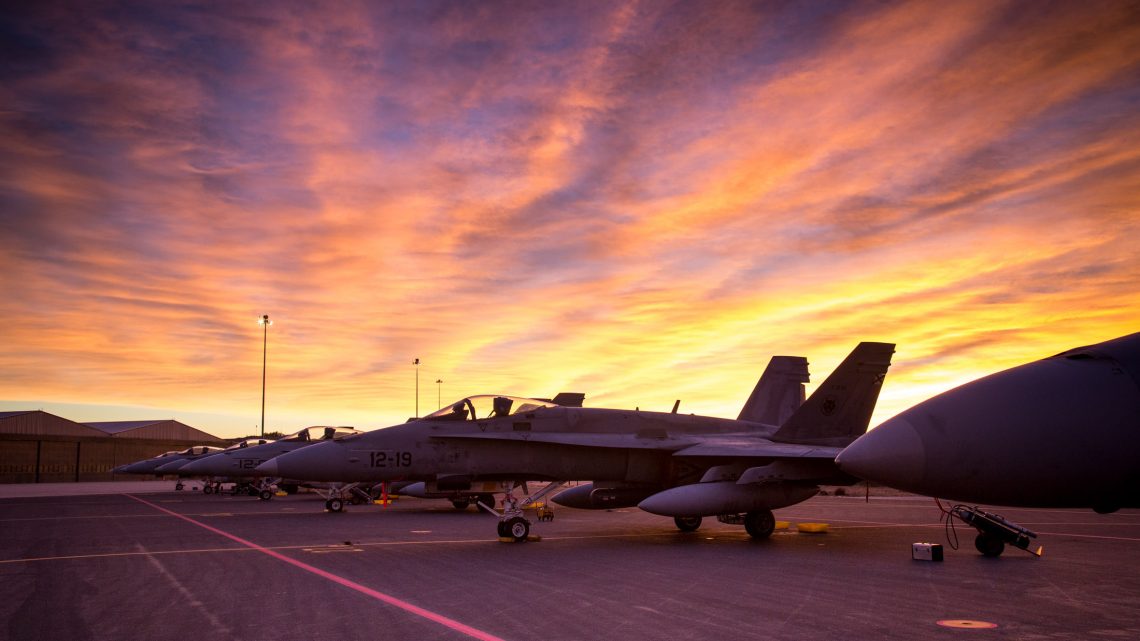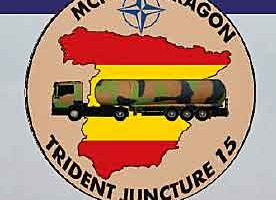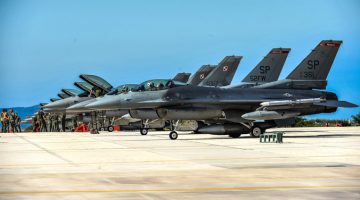By José Matos
The largest NATO military exercise in recent years, Trident Juncture 2015 (TRJE15) included a strong contingent of NATO air forces deployed to 15 air bases in Italy, Spain, and Portugal, the three alliance members who hosted the exercise.
*** José Matos is a researcher in military history. His work includes research on Portuguese Air Force operations in the Colonial War, mainly in Guinea. J. Matos is a contributor to Mais Alto magazine of the Portuguese Air Force and has been published in European magazines in countries like France, Germany, England and Italy. In the article below, he describes the air component of NATO’s recent Trident Juncture exercise held in Southern Europe. More than 160 NATO aircrafts were involved, while Spain was the first contributor with more than 7,800 personnels supporting the exercise.
Trident Juncture 2015 involved air forces from several NATO members and partner countries, which conducted joint air operations in Portugal, Spain, and Italy from October to November. More than 160 aircraft – including fighter jets, refueling tankers, transport aircraft, helicopters, surveillance aircraft, and drones – were directed by NATO’s Allied Air Command Headquarters (AIRCOM HQ) in Ramstein, Germany.
Tactical air operations were the responsibility of the Joint Force Air Component (JFAC), located in Poggio Renatico in northern Italy. At the local level air operations were directed by Local Operations Control (LOPSCON) facilities in Beja (Portugal), Albacete (Spain), and Trapani (Italy). The air operations conducted during Trident Juncture contributed to the certification of command centers and air units, which can now participate in force projection operations as part of NATO Reaction Force (NRF) 16.
Eight countries in the skies of Portugal
Participating air forces were hosted at Beja Airbase (BA11), located approximately 150 km south of the capital, Lisbon. Allied aircraft began arriving at this airbase in mid-October and remained at Beja until November 6.
For offensive missions, the Portuguese Air Force (FAP) deployed six F-16AM fighters from Monte Real Air Base (BA5) to Beja. Monte Real is base to two Portuguese F-16 squadrons, which have participated in several NATO exercises in the past. The choice of Beja, however, was due to the base’s southern location and favorable weather conditions, which rendered it more suitable to air operations over Spain, the Atlantic, and the Mediterranean.
In addition to Portugal, the United States (five F-16s) and Norway (six F-16s) also deployed fighter jets to Beja. The US fighters came from the 52nd Fighter Wing, based at Spangdahlem, Germany. Six Swedish JAS-39C Grippen fighters and six Finnish F-18C Hornet jets also deployed to Beja.
Air operations were conducted throughout TRJE 15’s three week duration, primarily over central and southern Portugal, although NATO aircraft also ventured into southern Spain. These missions were supported by a USAF KC-135 Stratotanker refueling aircraft from the 100th Air refueling Wing (ARW), which had deployed to Spain’s San Juan airbase. Another important factor in the refueling operation was an Airbus A-310 MRTT from the German Luftwaffe, which also supported the exercise’s aerial operations.
The Beja-based training was intense, with aircraft taking off throughout the day, and even at night, to perform a variety of missions. Hellenic Air Force Colonel Georgis Giapitzis was the Chief of NATO’s Local Operations Control at Beja Air Base.
In addition to the F-16s, Portugal also provided TRJE 15 with two Beja-based P-3C CUP+ maritime patrol aircraft from Squadron 601, and one EH-101 Merlin helicopter from 751 Squadron, based in Montijo, near Lisbon.
In addition to the fighters previously mentioned, Beja also hosted numerous transport and refueling aircraft, including a Danish C-130J, a Canadian CC-130J, German C-160 Transall, and an American HC-130P. These aircraft were employed in various transport missions, including the deployment of a Norwegian NASAMS (Norwegian Advanced Surface to Air Missile System) air defense system to northern Portugal, which was airlifted by two German C-160s and the Canadian and Danish Hercules. The C-130s also performed paratrooper drops.
In short, some 40 aircraft and 3,000 personnel from eight nations involved were participated in the exercise at BA 11. According to NATO’s Allied Air Command more than 500 sorties, totaling approximately 900 flight hours, were conducted at Beja during the 17-day exercise.
In 2016, Portugal will contribute with a mechanized infantry battalion, a frigate and six F-16AM fighters to the NATO Reaction Force (NRF). With respect to the Air Force, the six F-16s will remain in a high state of readiness throughout the year, prepared for deployment within seven days to support NATO operations as required.
The Spanish contribution
Spain also hosted a considerable fleet of aircraft, and also contributed heavily to the aerial component. The Spanish Air Force – in Spain called the Ejercito del aire – participated with 516 personnel, 29 fixed-wing aircraft (twelve EF-2000, twelve EF-18, two C-295, one C-235, one C-130 and a Falcon 20/EW) and two AS-332 Super Puma helicopters. Several Spanish Air Force units contributed these assets, and four Spanish air bases – particularly Albacete in southeastern Spain – participated in TRJE 15. Spain stationed its Eurofighter Typhoon and F-18 Hornet fighters in Albacete, where they were joined by aircraft from other NATO air forces. Albacete also hosts NATO’s Tactical Leadership Programme, where Alliance aircrews train together in simulated multi-national combat operations.
Night and day
The French Air Force, or Armée de l’air, deployed three Mirage 2000-5F fighters from BA 102 in Dijon-Longvic to Albacete. They were accompanied by the mobile air defense system EUROSAM SAMP/T (Sol-Air Moyenne Portée Terrestrial), which ensured airspace control and defense operations. Turkey also dispatched five F-16 fighters to the Spanish base, but the largest multinational contingent came from the United Kingdom, which sent fourteen fighters to Albacete supported by airborne early warning and tanker aircraft. The Royal Air Force (RAF) fighter detachment comprised eight 31 Sqn Tornado GR4 attack aircraft and six 1 (F) Sqn FGR4s Typhoon fighters. These aircraft operated together on several missions, usually with the Typhoons escorting the Tornados on strike sorties simulating Paveway IV precision bomb drops. RAF pilots flew up to 18 missions per calendar day, both in daytime and nighttime, continually supported by sterling work from a pair of 8 Sqn E-3D Sentries and a 10/101 Sqn Voyager (Airbus 330) tanker, both based at the Torrejon air base near Madrid.
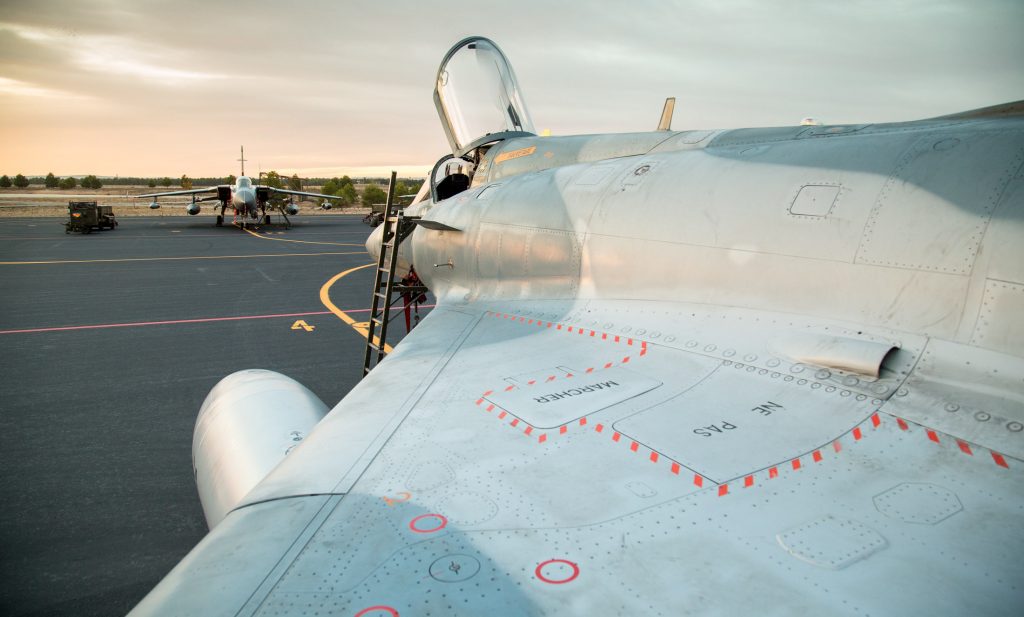
A French Air Force Mirage 2000 and a Royal Air Force Typhoon at Albacete Air Force Base, Spain on October 23, 2015 during Trident Juncture 15. (Photo: Cynthia Vernat)
In the Skies over Sicily
However, it was Italy who had the honor of inaugurating the operational phase of Trident Juncture 2015. On October 19th, the Italian Air Force’s 37th Wing hosted the exercise’s opening ceremony at its base at Trapani Birgi, in northern Sicily. The ceremony was attended by various military and civilian dignitaries who witnessed a demonstration of NATO air power conducted by Typhoon, F-18, F-16, Tornado, and AMX aircraft, as well as MQ-9A drones.
For offensive missions the Italian Air Force, or Aeronautica Militare (AM), deployed Typhoon fighters from the 4th, 36th, and 37th Wings to Trapani. These were joined by Tornado IDS (Interdictor/Strike) aircraft from the 6th Wing in Ghedi and Tornado ECR (Electronic Combat and Reconnaissance) jets from 50th Wing in Piacenza. Also present at the Sicilian base were four AMX light attack fighters from the AM’s 51st Wing at Istrana, a KC-767 tanker from the 14th Wing at Pratica di Mare, and a C-130J Hercules II from the 46th Air Brigade based in Pisa, as well as HH-212 helicopters from the 9th and 15th Wings. For ISR (Intelligence Surveillance Reconnaissance) missions out of Trapani the AM flew MQ-1C Predator and MQ-9A Reaper drones contributed by the 32nd Wing at Amendola.
The Italian base also hosted F-16C/D fighters from the Hellenic Air Force’s 347 Sqn Mira “Perseus,” F-16Cs from Poland’s 32° BLT (Baza Lotnictwa Taktycznego), and F-16Cs from the US Air Force’s 52nd Fighter Wing in Spangdahlem, Germany. KC-130 tanker aircraft from Canada’s 435th Sqn and a Polish CASA C-295M transport supported missions flying out of Trapani. The airborne warning and control functions were fulfilled by two NATO E-3A Sentry (AWACS) aircraft from Geilenkirchen Air Base in Germany. Of the ten Typhoon fighters present, four operated from the base of Grosseto, home of the 4th Wing. Missions were flown in the afternoon and nighttime; each wave comprised four Greek F-16s, four Polish F-16s, four AMXs, four to six Eurofighters, and four to six Tornados.
Finally, an additional word regarding American participation in this exercise, which was crucial at all levels: the tactical and strategic capabilities of NATO’s most important member remain essential in any force projection scenario in Europe. For example, the longest raid of this exercise culminated over Spain on November 4, when two B-52 Stratofortress bombers assigned to Air Force Global Strike Command flew directly from Barksdale Air Force Base, Louisiana, to the San Gregorio area near Zaragoza – a 26-hour flight. The two bombers were followed by 511 paratroopers from the 2nd Brigade and 82nd Airborne Division, which also flew directly from the United States, more precisely from Fort Bragg, North Carolina, in C-17 Globemaster III transport aircraft. This paratroopers had flown nine hours from North Carolina, along with 50 Spanish paratroopers who had been training with them in the US. The seven C-17s were refueled over the Atlantic before dropping the airborne forces into the San Gregorio training zone. Engaged in the battle were aircraft from at least three nations, including F-18s, B-52s, Apaches, Chinooks and Tigre’s. Four US Apaches based in Katterbach, Germany, had flew to Spain to participate in the exercise.
In all, the US contributed air assets to virtually all TRJE 15 scenarios and ranked second in the number of personnel deployed to support the exercise – 5,500 in total, not far behind Spain’s contribution of 7,850 personnel.
The next Trident Juncture will be held in Northern Norway in 2018, and is expected to take place on a similar scale.
Photos©Cynthia Vernat, TRJE 15

